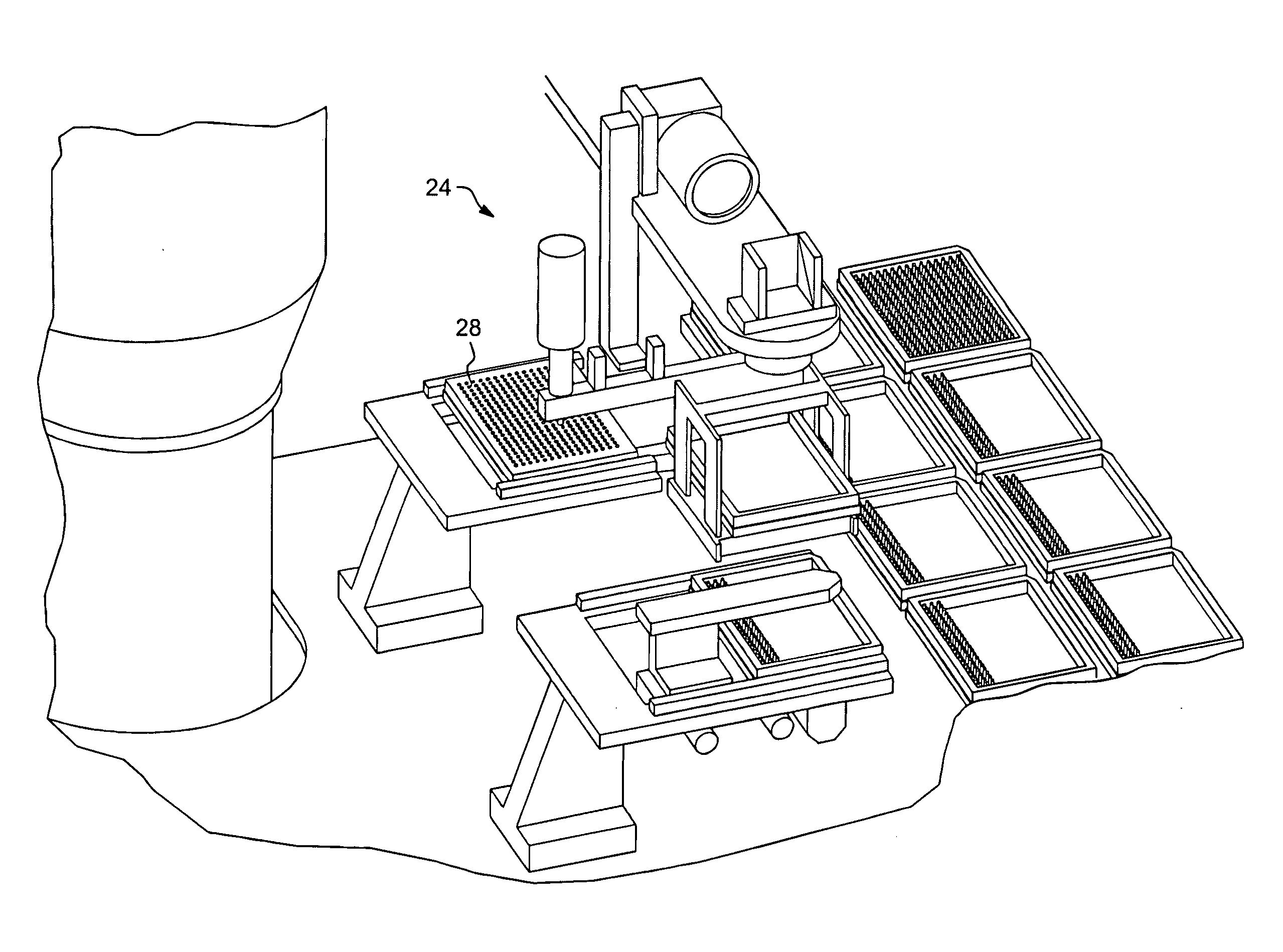Method and apparatus for automated storage and retrieval of miniature shelf keeping units
a shelf keeping unit and automated storage technology, applied in the field of automated chemical, pharmaceutical or biotech compound testing systems, can solve the problems of difficult, expensive and laborious assembly, and difficulty in reliably sealing each shelf keeping uni
- Summary
- Abstract
- Description
- Claims
- Application Information
AI Technical Summary
Benefits of technology
Problems solved by technology
Method used
Image
Examples
Embodiment Construction
[0042]Referring now to FIGS. 1-15, in accordance with the present invention, an automated miniature shelf keeping unit storage and retrieval system 20 uses a very small molded plastic shelf keeping unit or test tube known as a “minitube”22. The minitubes 22 are stored in trays in (preferably) a standing refrigeration unit and are retrieved by a machine or robot 24 having a die cutting tubular end effector 26 adapted to selectively cut away and remove a minitube 22 from an integrally molded matrix 28 containing hundreds of minitubes (e.g., 384). The matrix is also called a minitube well plate 28 and preferably includes a sealing membrane or layer covering the upward facing openings of the minitubes. Upon cutting a selected minitube 22 away from the matrix, the end effector 26 is pushed over the selected minitube, thus forcing the minitube into the cylindrical interior lumen of the end effector 26, where it is retained by friction fit until such time as the minitube is to be releaseab...
PUM
 Login to View More
Login to View More Abstract
Description
Claims
Application Information
 Login to View More
Login to View More - R&D
- Intellectual Property
- Life Sciences
- Materials
- Tech Scout
- Unparalleled Data Quality
- Higher Quality Content
- 60% Fewer Hallucinations
Browse by: Latest US Patents, China's latest patents, Technical Efficacy Thesaurus, Application Domain, Technology Topic, Popular Technical Reports.
© 2025 PatSnap. All rights reserved.Legal|Privacy policy|Modern Slavery Act Transparency Statement|Sitemap|About US| Contact US: help@patsnap.com



